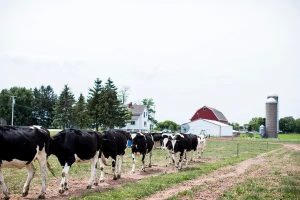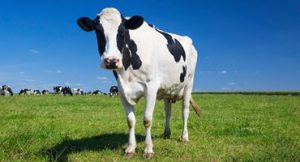
The U.S. dairy industry is a powerhouse of productivity, churning out massive quantities of milk to meet both domestic and international demands. However, sustaining this level of efficiency and ensuring that surplus milk finds its way to consumers around the globe relies heavily on a robust and reliable transportation system
The Need for Robust Export Channels
“We have a surplus of dairy products in the U.S.,” Danny Munch, an economist with the American Farm Bureau Federation, points out during the 2024 Dairy Financial and Risk Management Conference on Sept. 11 in Harrisburg, Pa. “We need to export.”
This statement underscores the critical importance of a seamless transportation network for the dairy sector. According to Munch, both land and water transportation systems play pivotal roles in delivering dairy products to export markets.
One glaring example of what a disruption caused is the recent collapse of the Francis Scott Key Bridge in March. This incident serves as a harsh reminder of the vulnerability of our transportation networks. The Port of Baltimore, a major hub for U.S. goods, saw its operations severely impacted. For 11 weeks, shipping to and from the port was largely halted, resulting in an estimated loss of $15 million per day.
The Critical Role of Truck and Rail Networks
On land, the U.S. economy heavily depends on its truck and rail networks, which are responsible for nearly 70% of the country’s freight movement. These networks are essential in ensuring that dairy products efficiently reach various ports and other transportation hubs.
Betty Berning, analyst with the Daily Dairy Report, underscores that transportation is indeed critical to the dairy supply chain.
“Trucks, rail, and container ships are a vital part of dairy’s infrastructure, whether they are moving milk off the farm, ingredients to a co-op or processor, or finished products to wholesalers and retailers,” she says.
According to Munch, U.S. railways have struggled to rebuild employee numbers after COVID-19.
“That and recent Canadian railway woes could both impact the farm economy,” he says.
As the U.S. dairy industry continues to thrive, the critical importance of a seamless and a reliable transportation network cannot be overstated. Addressing vulnerabilities and ensuring the robustness of these transportation systems are imperative steps in sustaining the industry’s productivity.
You can now read the most important #news on #eDairyNews #Whatsapp channels!!!
🇺🇸 eDairy News INGLÊS: https://whatsapp.com/channel/0029VaKsjzGDTkJyIN6hcP1K

























